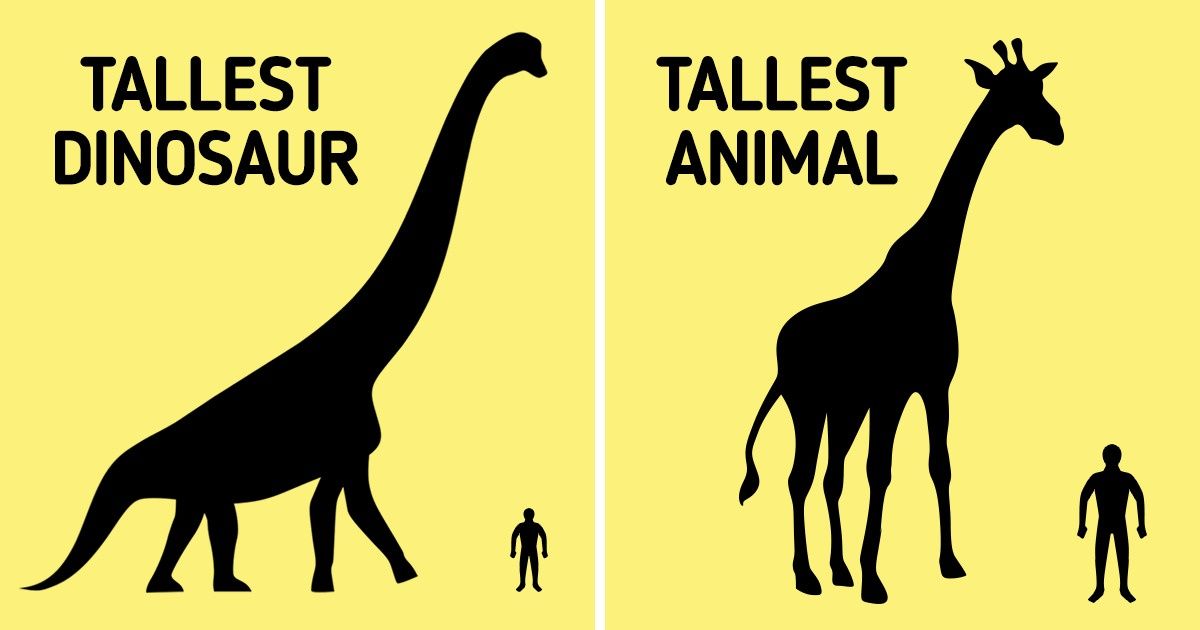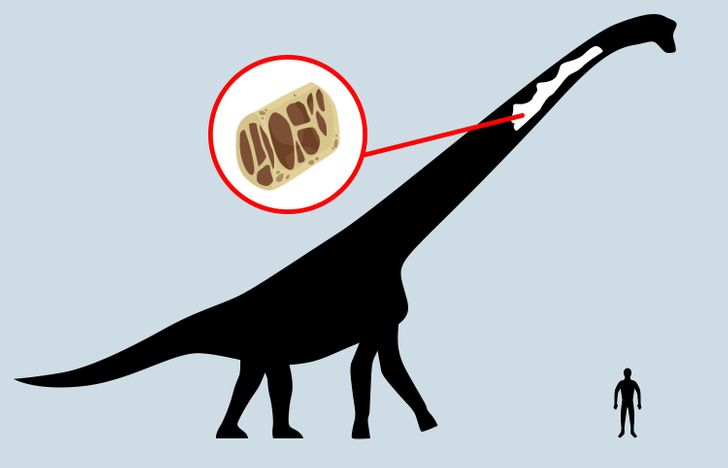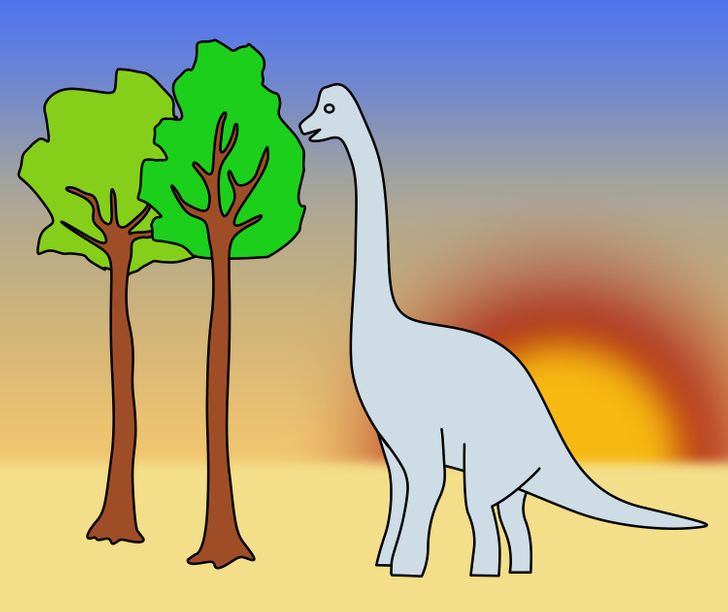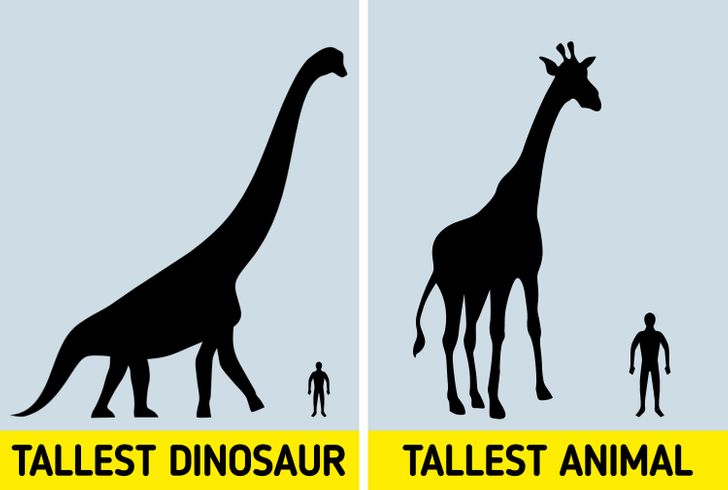Why Dinosaurs Were So Big

In today’s age, there aren’t really any animals that can compete with how big some dinosaurs were. We at 5-Minute Crafts were curious as to why this is, and we tried to uncover the secrets behind their incredible height.
Their bones were hollow.

Many dinosaur bones were hollowed out by air-sacks extending from their lungs. Because of this, their skeleton was lighter. This means dinosaurs could support a much larger body with their 4 legs, while a solid-boned animal of a similar size would’ve weighted more than its dinosaur counterpart. Some of the largest plant-eating dinosaurs weighed as much as 80 tonnes. In comparison, the largest elephants in the world weigh just 6 tonnes.
Some dinosaurs also had super-efficient respiratory systems that helped them disperse the heat generated from their metabolism. For example, sauropods, the longest dinosaurs there were, might’ve grown to their enormous size thanks to this system.
They ate a lot.

They might’ve not needed to chew as much as modern mammals. Instead, they could snag anything from branches, leaves, and twigs and swallow everything whole, so they’d eat a lot, very quickly. Because they didn’t need to chew as much, there wasn’t a need for their teeth to be bulky. Their heads were lighter and their necks were longer, letting them reach a wide range of plants without even moving.
They grew big because they had to.

Let’s take the giraffe as an example. Its size gives it several advantages, one of which enables them to reach food that other herbivores (animals that feed on plants) can’t reach. Larger animals are also harder to hunt. If we look at elephants, predators will have an easier time hunting a smaller elephant rather than a large one. It was the same for dinosaurs.
Herbivores gained mass to avoid being preyed on, which, consequentially made predator dinosaurs grow larger so they could hunt these same large herbivores, and over time, they pushed one another to these heights.